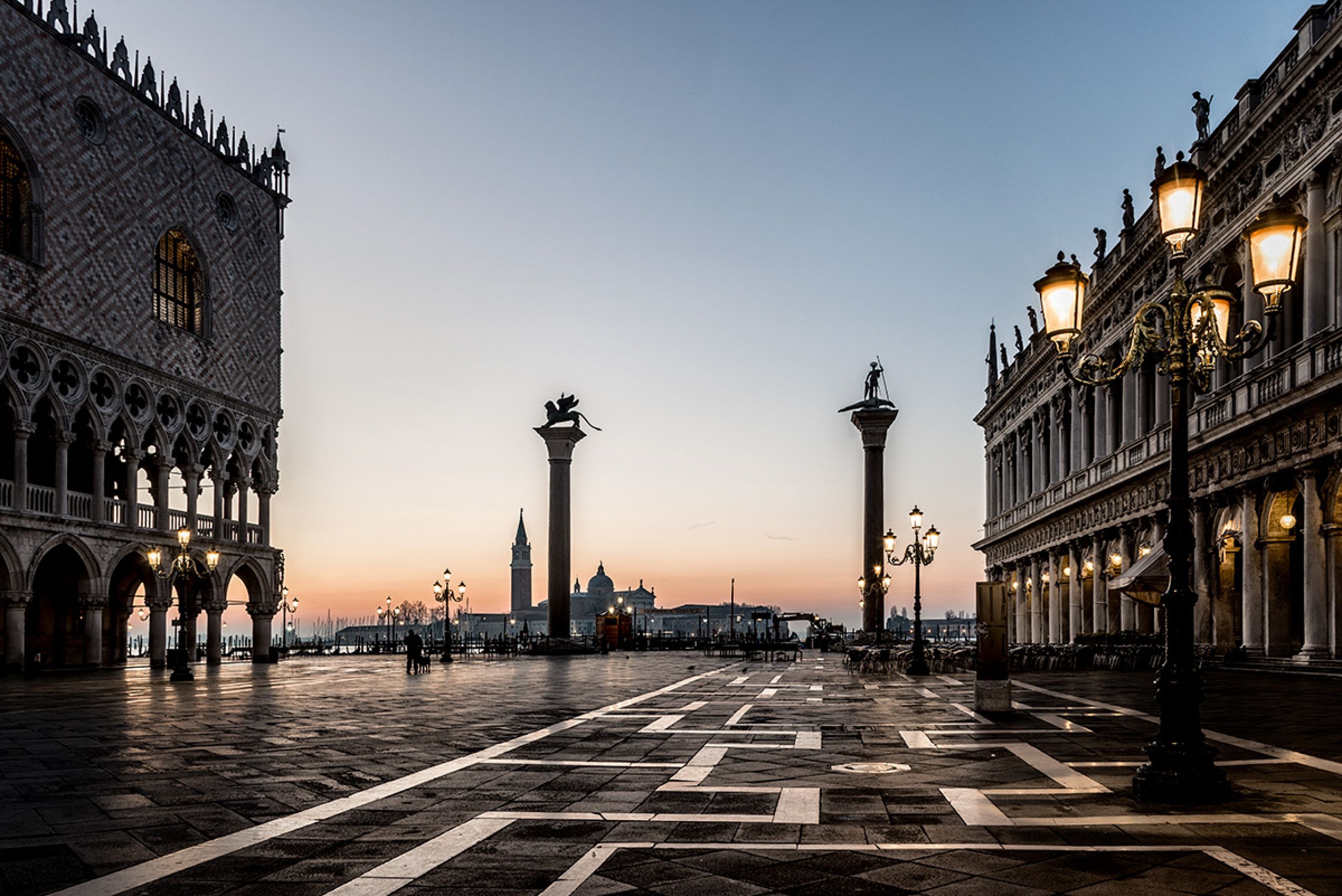Photographic Silence: When the Image Suspends Words and Time – Cross Perspectives from Roche and Lemagny

Venice awakens – Photo : © Pierre Chancy
Photographic silence, often seen as an enigma, presents a challenge: how can a still image evoke a resonant void? This article dissects works that reveal themselves over time by exploring the theories of Denis Roche and Jean-Claude Lemagny. You’ll discover composition techniques, the role of format, and artistic interpretation to grasp this paradoxical art where absence becomes language.
Summary
- The deep nature of photographic silence
- The artistic interpretation of silence in imagery
- Technical approaches to photographic silence
- Key figures in photographic silence
The deep nature of photographic silence
Theoretical foundations of silence in visual art
Jean-Claude Lemagny defines photographic silence as the inherent muteness of the artwork—a visual language that speaks without audible expression. For him, the art of silence lies in the image’s ability to evoke a resonating void.
Photographic silence emerges from the tension between the captured moment and its evolving reading. The act of freezing a moment suspends time, inviting an interpretation that matures over the years. Although static, the image whispers perceptibly through the viewer’s experience.
The book and format as privileged spaces of silence
The artist’s book provides a meditative exchange space, where the rhythm of page turns invites slow reading. Each format alters the intensity of the silence felt, while the paper transforms the reception of forms and the unspeakable.
| Format / Paper type | Technical characteristics | Impact on contemplative experience |
|---|---|---|
| Landscape A4 format (28x21cm) | Ideal for landscapes, panoramic view | Enhances the sense of vastness and calm, reinforces photographic silence through natural scale |
| Square format (21x21cm or 30x30cm) | Visual balance and geometric harmony | Creates balanced contemplation where each element is equally emphasized, enhancing visual silence |
| Portrait A4 format (21x28cm) | Suited for vertical smartphone photos | Allows for an intimate sequence of silent portraits, encourages linear and contemplative reading |
| XL square format (30x30cm) | Large professional art format | Creates an art magazine effect, deepens immersion into photographic silence through its imposing size |
| Silver halide photo paper | Invisible print grain, precise detail | Faithful reproduction of nuances, essential for capturing the unspeakable in works of visual silence |
| Matte paper | Reduced reflections, soft surface | Enables gentle reading of black and white images, ideal for thoughtful reflections on form |
| Satin paper | Vibrant colors and reduced glare | Offers an optimal balance between brightness and visual comfort for contemplative experiences |
| Gloss-coated paper | Shiny finish but risk of reflections | Suited for dynamic images but potentially disruptive for silent contemplation |
Denis Roche, author of “La Disparition des lucioles” (The Disappearance of Fireflies), explores silence through his books. His photographic art books convey a reflection on duration, with each page opening onto a space for contemplation.
Claude Lemagny emphasizes that the format of an art book directly influences the visual experience. He identifies formats that encourage introspection, where form and whitespace create a dialogue between text and image.
Thinking about photographic silence through critical writings
Reflections on photographic silence rely on critical texts analyzing the paradoxical art of the still image. Theories center around the idea that the photographic image lacks inherent meaning but captures the unspeakable.
Jean-Claude Lemagny’s body of work, especially “Silence de la photographie”, marks the study of photographic silence. He develops the idea that the mute image exists only through interpretation, prompting reflection on the act of seeing.
The artistic interpretation of silence in imagery
Framing and composition as vectors of silence
Jean-Claude Lemagny explains that the frame acts as a defined space where silence fully expresses itself. The image’s edges become boundaries between the visible and the unspeakable, inviting contemplative reading.
- Minimalism and negative space: favoring simplicity and empty zones to focus attention on what matters, enhancing emotion through absence.
- Play of light and soft shadows: using dim lighting and long exposures to amplify calm or melancholy in a scene.
- Clean framing and perspective: choosing clean lines and intimate angles to create contemplative distance between subject and viewer.
- Black and white: removing color to emphasize textures, shapes, and contrasts, encouraging introspective and silent image reading.
The format chosen by the photographer directly influences the intensity of silence felt. A horizontal format suggests peaceful reading, while a square format offers visual balance conducive to meditative silence.
Disappearance and absence as manifestations of silence
Disappearance in photography becomes a form of visual silence when physical erasure becomes visual language. Denis Roche explores this theme through reflections on the photographic act and memory.
The photograph “Place Saint Marc during lockdown” embodies silence through the absence of movement and human presence. It shows how the urban void generates captivating visual muteness.
Denis Roche’s work “La Disparition des lucioles” shows how the loss of a natural phenomenon becomes a metaphor for photographic silence. The photograph “Old Monk” embodies meditative silence, where the subject’s stillness reinforces reflection on suspended time.
Black and white as a language of silence
Black and white is often linked to photographic silence through its visual purity. The absence of color highlights shapes and contrasts, fostering introspective reading. Photographic abstraction, often associated with visual silence, explores non-figurative forms and spaces that deepen contemplative experience.
Jean-Claude Lemagny’s theories on black and white as an expression of silence celebrate its ability to reveal the essential. Denis Roche uses this technique to capture “states” encountered during his travels, without staged composition.
The unspeakable and its visual translation
Photographic silence expresses the unspeakable by opening a space for interpretation. The article on photographic contemplation emphasizes how this art form invites meditation on what cannot be said.
Art critics address the unspeakable in photography as a tension zone between the visible and the erasure of traces. This blurred boundary between what is shown and what is left to interpretation defines the essence of photographic silence.
Technical approaches to photographic silence
Technical mastery in service of silent expression
Photographic techniques that best express silence include black and white, long exposures, and minimalist framing. These choices highlight the absence of motion and empty spaces.
Denis Roche conceptualized photography as an intimate act, close to silence. He viewed black and white as mute, preferring spontaneous states to constructed images, capturing shapes during his wanderings.
Space and composition in expressing silence
Empty space in a photographic composition creates a perceptible silence by guiding the viewer’s gaze toward the essential. Minimalist framing enhances this calm by eliminating distractions.
Claude Lemagny theorized the importance of space in crafting silence. He explored how geometric forms and visual balance between full and empty areas convey silence through pictorial harmony.
Key figures in photographic silence
Denis Roche and his view of the photographic act
Denis Roche saw photography as a silent act of capturing time. He believed that the still image spoke for itself, without the need for superfluous words.
Photographic silence, according to Roche, is expressed through black and white, mirror play, and the spontaneous discovery of forms. His theoretical writings guide the reading of his contemplative images.
Analysis of Denis Roche’s major works exploring silence
Roche’s works reveal their meaning through contemplation. Our 2025 selection of photographers, “The Disappearance of Fireflies”, or “Le Boîtier de mélancolie” embody this dialogue between silence and revelation.
The 115 photos exhibited in Montpellier show how Roche played with mirrors, reflections, and absence. His black and white shots express a meditative silence on the passage of time.
Roche and Lemagny’s shared perspectives on visual silence
Jean-Claude Lemagny and Denis Roche share a theoretical vision of photographic silence. Their writings illuminate the relationship between image and silent contemplation.
Lemagny’s reflections on silence as visual language complement Roche’s practical approach. Together, their work forms a critical foundation for the study of silence in photography.
Photographic silence reveals the essence of absence through the theories of Jean-Claude Lemagny and Denis Roche, the book format as a space for contemplation, and subtle technical choices like black and white. Explore these works and deepen your photographic interpretation to grasp the paradoxical beauty of the unspeakable. In this dialogue between the visible and the unspoken, each image becomes an invitation to rediscover the world with renewed acuity.



